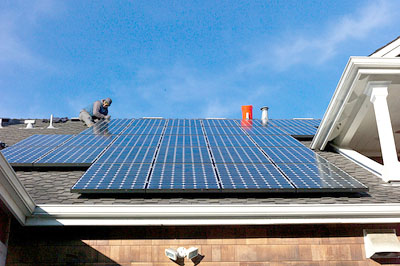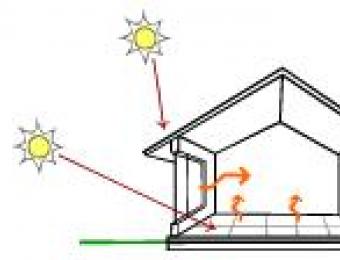Our thermo-nuclear source
Our sun - there every day, is our nearest space-based thermo-nuclear reactor. It rains energy on us free of charge. The light the sun provides can be converted to electricity via solar cells, but not at night. However the combination of the sun’s heating of the earth’s atmosphere, and the rotation of the earth produces wind - and wind blows at night as well.
Solar and wind
Solar, wind or both? For the moment, solar power is the only practical renewable alternative energy source for city dwellers. Wind power, using small wind mills like those used for water pumping, may also be a low power alternative for certain country dwellers. Both energy sources are useful for charging batteries, although these are best suited to remote localities.
Solar collectors are normally installed on roofs. The kinds of things that will affect how effective a solar installation is include:
- The amount of sunlight available during the year
- The number of clear, haze free days
- The maximum summer temperature
- The direction in which roof surfaces face (ideally North-facing)
A basic solar photovoltaic system is shown in the image above. The solar cells supply direct current, and for grid-connected solar power, the current goes to an inverter, which is a device used for turning direct current to alternating current, which is generally safer. The power from the supply company or authority that is connected to the home is AC (alternating current). Grid-connected solar energy has been heavily promoted by the Government, and gives householders the chance to sell electricity back to energy suppliers.
Capturing solar energy
Solar cells capture the sunlight energy via the photoelectric effect. Essentially what happens is that the sunlight prises electrons loose in certain light-sensitive materials. Electrons are the things that make up electric current, and in this way there is electrical energy available for storage in batteries - or to be sent to inverters for immediate use.
Grid connected systems
An inverter changes the direct current energy to alternating current. Direct current is suitable for charging batteries, but is not suitable for use in the appliances in your home, all of which work on alternating current. In addition, by generating more energy than can be used at home there is an excess that can be ‘pumped’ back to the electricity provider. This is the basis for grid-connected systems. Currently you can recoup your investment in solar installations on the basis of so-called gross feed-in. This allows you to charge your electricity provider for everything generated on the roof.
Wind
Wind energy can be of practical use for remote locations. Small windmills, those that run pumps, for example, can also be used to generate electricity. Electricity from wind is slightly more complicated though, and isn't a straightforward matter of calling your local electrician. Small windmills generally charge batteries, which can then drive inverters.






